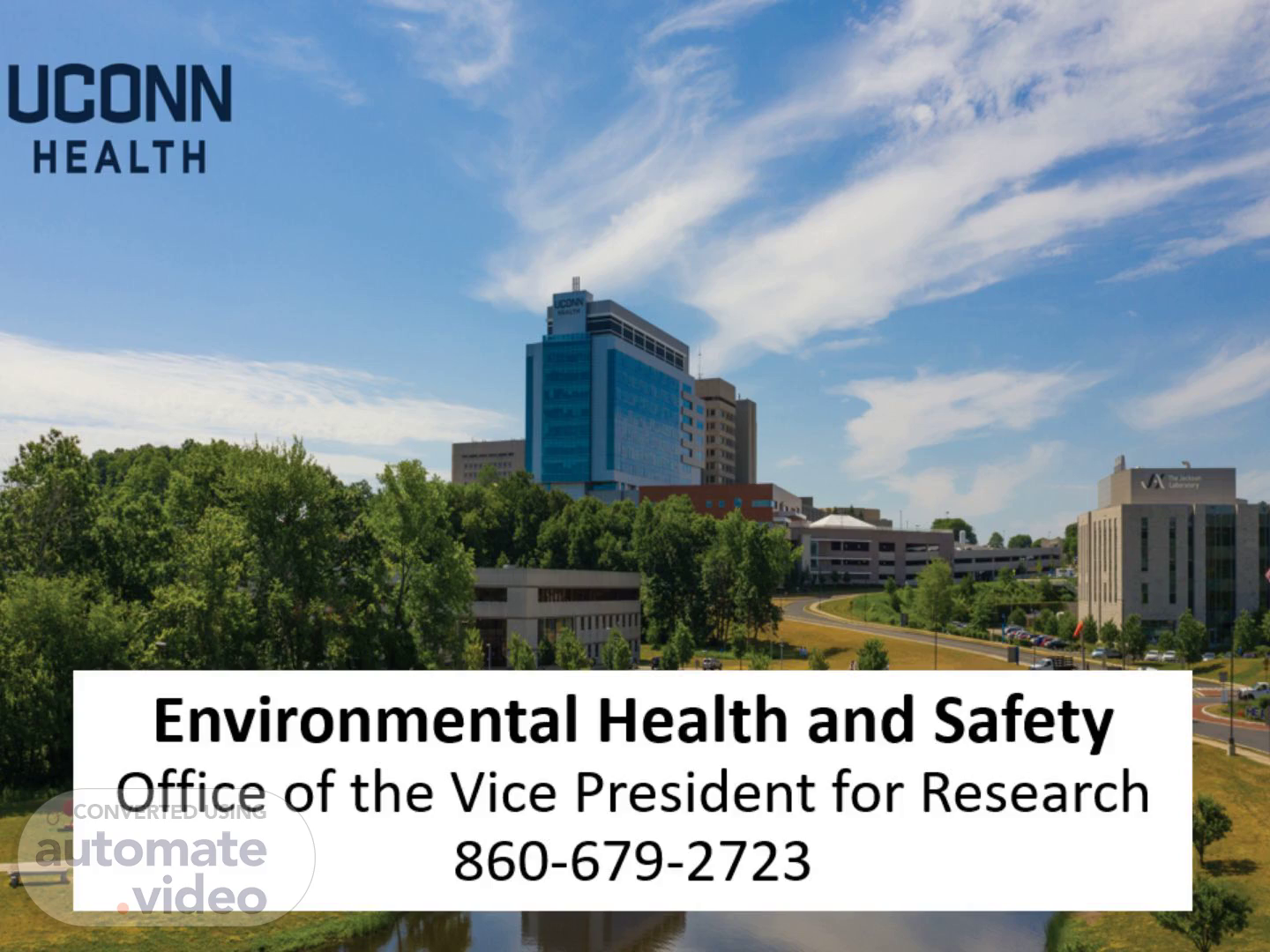
PowerPoint Presentation
Scene 1 (0s)
[Audio] Welcome to Environmental Health and Safety's, Hazardous Waste Training for Support Services..
Scene 2 (8s)
[Audio] This training is applicable to Facilities Development and Operations, Campus Planning, Logistics Management, Housekeeping, Custodial Services, Clinical Engineering, Information Technology and any other support service or activity under the direction of the aforementioned; and all other ancillary services not directly mentioned here..
Scene 3 (30s)
[Audio] All workers who handle hazardous waste must be trained to properly identify and safely work with these materials. The objective of this session is to provide introductory training, that includes. Identifying hazardous wastes "making a waste determination" Choosing the right containers, and labeling them properly. Satellite accumulation areas and container management. Recognizing the role of manifests, and keeping accurate records. Protecting yourself from hazards through BMPs and PPE. Responding effectively to emergencies..
Scene 4 (1m 5s)
[Audio] Key duties for generators of hazardous waste, include; Identifying the nature of your hazardous waste. Checking to see if the waste is excluded from regulation. Reviewing the EPA lists of hazardous waste to see if the waste is "LISTED". Determining if it's a characteristic waste. Considering if your waste is a Universal Waste. Considering if your waste is regulated by the State of CT., due to toxicity or health hazards if mis-managed. Hazardous wastes include many kinds of discarded chemicals and other wastes generated from commercial, industrial, and institutional activities. Types of waste that are commonly hazardous include cleaning solvents, spent acids and bases, metal finishing wastes, painting wastes, sludges from air and water pollution control units, and many other discarded materials. Hazardous wastes may also include many items that you would not normally think of as being hazardous, such as: Batteries (can contain acids and bases, as well as metals like lead and cadmium) CRT-based computer monitors (contain lead) Thermostats and fluorescent lamps (contain mercury) Renovation and demolition waste (can contain lead-based paint).
Scene 5 (2m 23s)
[Audio] The first step in the identification process is determining if the waste you generated and intend to discard is regulated as a hazardous waste. In order for something to be regulated as a hazardous waste, it must qualify as a solid waste. A solid waste is a waste that is not exempted in the regulations and fit into the category of being; • Solids, such as dusts, powders, or fumes. • Liquids, • Contained gases, such as aerosols cans. Semi-solids and sludges. A Safety Data Sheet will tell you about a chemical's physical state and other helpful information to be used in the waste determination process, which gets more difficult with mixtures..